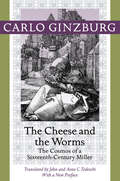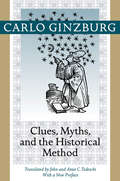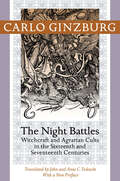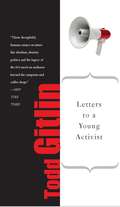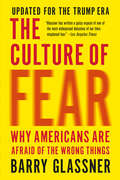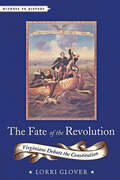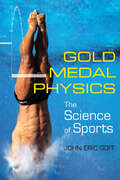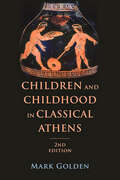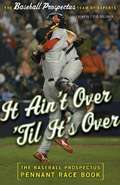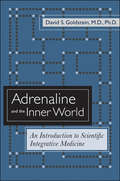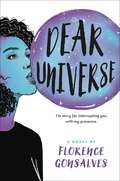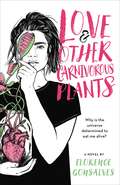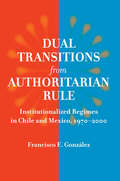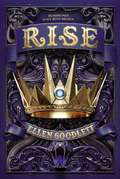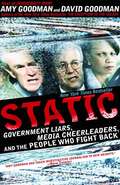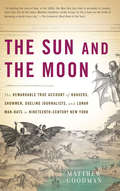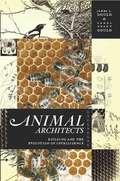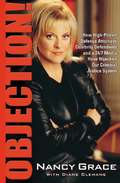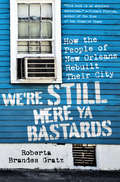- Table View
- List View
The Cheese and the Worms: The Cosmos of a Sixteenth-Century Miller
by Carlo GinzburgThe Cheese and the Worms is an incisive study of popular culture in the sixteenth century as seen through the eyes of one man, the miller known as Menocchio, who was accused of heresy during the Inquisition and sentenced to death. Carlo Ginzburg uses the trial records to illustrate the religious and social conflicts of the society Menocchio lived in. For a common miller, Menocchio was surprisingly literate. In his trial testimony he made references to more than a dozen books, including the Bible, Boccaccio's Decameron, Mandeville's Travels, and a "mysterious" book that may have been the Koran. And what he read he recast in terms familiar to him, as in his own version of the creation: "All was chaos, that is earth, air, water, and fire were mixed together; and of that bulk a mass formed—just as cheese is made out of milk—and worms appeared in it, and these were the angels."Ginzburg’s influential book has been widely regarded as an early example of the analytic, case-oriented approach known as microhistory. In a thoughtful new preface, Ginzburg offers his own corollary to Menocchio’s story as he considers the discrepancy between the intentions of the writer and what gets written. The Italian miller’s story and Ginzburg’s work continue to resonate with modern readers because they focus on how oral and written culture are inextricably linked. Menocchio’s 500-year-old challenge to authority remains evocative and vital today.
The Cheese and the Worms: The Cosmos of a Sixteenth-Century Miller
by Carlo GinzburgThe Cheese and the Worms is an incisive study of popular culture in the sixteenth century as seen through the eyes of one man, the miller known as Menocchio, who was accused of heresy during the Inquisition and sentenced to death. Carlo Ginzburg uses the trial records to illustrate the religious and social conflicts of the society Menocchio lived in. For a common miller, Menocchio was surprisingly literate. In his trial testimony he made references to more than a dozen books, including the Bible, Boccaccio's Decameron, Mandeville's Travels, and a "mysterious" book that may have been the Koran. And what he read he recast in terms familiar to him, as in his own version of the creation: "All was chaos, that is earth, air, water, and fire were mixed together; and of that bulk a mass formedâ€�just as cheese is made out of milkâ€�and worms appeared in it, and these were the angels."Ginzburg’s influential book has been widely regarded as an early example of the analytic, case-oriented approach known as microhistory. In a thoughtful new preface, Ginzburg offers his own corollary to Menocchio’s story as he considers the discrepancy between the intentions of the writer and what gets written. The Italian miller’s story and Ginzburg’s work continue to resonate with modern readers because they focus on how oral and written culture are inextricably linked. Menocchio’s 500-year-old challenge to authority remains evocative and vital today.
Clues, Myths, and the Historical Method
by Carlo GinzburgMore than twenty years after Clues, Myths, and the Historical Method was first published in English, this extraordinary collection remains a classic. The book brings together essays about Renaissance witchcraft, National Socialism, sixteenth-century Italian painting, Freud’s wolf-man, and other topics. In the influential centerpiece of the volume Carlo Ginzburg places historical knowledge in a long tradition of cognitive practices and shows how a research strategy based on reading clues and traces embedded in the historical record reveals otherwise hidden information. Acknowledging his debt to art history, psychoanalysis, comparative religion, and anthropology, Ginzburg challenges us to retrieve cultural and social dimensions beyond disciplinary boundaries.In his new preface, Ginzburg reflects on how easily we miss the context in which we read, write, and live. Only hindsight allows some understanding. He examines his own path in research during the 1970s and its relationship to the times, especially the political scenes of Italy and Germany. Was he influenced by the environment, he asks himself, and if so, how? Ginzburg uses his own experience to examine the elusive and constantly evolving nature of history and historical research.
Clues, Myths, and the Historical Method
by Carlo GinzburgMore than twenty years after Clues, Myths, and the Historical Method was first published in English, this extraordinary collection remains a classic. The book brings together essays about Renaissance witchcraft, National Socialism, sixteenth-century Italian painting, Freud’s wolf-man, and other topics. In the influential centerpiece of the volume Carlo Ginzburg places historical knowledge in a long tradition of cognitive practices and shows how a research strategy based on reading clues and traces embedded in the historical record reveals otherwise hidden information. Acknowledging his debt to art history, psychoanalysis, comparative religion, and anthropology, Ginzburg challenges us to retrieve cultural and social dimensions beyond disciplinary boundaries.In his new preface, Ginzburg reflects on how easily we miss the context in which we read, write, and live. Only hindsight allows some understanding. He examines his own path in research during the 1970s and its relationship to the times, especially the political scenes of Italy and Germany. Was he influenced by the environment, he asks himself, and if so, how? Ginzburg uses his own experience to examine the elusive and constantly evolving nature of history and historical research.
The Night Battles: Witchcraft and Agrarian Cults in the Sixteenth and Seventeenth Centuries
by Carlo GinzburgBased on research in the Inquisitorial archives of Northern Italy, The Night Battles recounts the story of a peasant fertility cult centered on the benandanti, literally, "good walkers." These men and women described fighting extraordinary ritual battles against witches and wizards in order to protect their harvests. While their bodies slept, the souls of the benandanti were able to fly into the night sky to engage in epic spiritual combat for the good of the village. Carlo Ginzburg looks at how the Inquisition's officers interpreted these tales to support their world view that the peasants were in fact practicing sorcery. The result of this cultural clash, which lasted for more than a century, was the slow metamorphosis of the benandanti into the Inquisition's mortal enemies—witches.Relying upon this exceptionally well-documented case study, Ginzburg argues that a similar transformation of attitudes—perceiving folk beliefs as diabolical witchcraft—took place all over Europe and spread to the New World. In his new preface, Ginzburg reflects on the interplay of chance and discovery, as well as on the relationship between anomalous cases and historical generalizations.
The Night Battles: Witchcraft and Agrarian Cults in the Sixteenth and Seventeenth Centuries (Routledge Library Editions: Witchcraft Ser.)
by Carlo GinzburgBased on research in the Inquisitorial archives of Northern Italy, The Night Battles recounts the story of a peasant fertility cult centered on the benandanti, literally, "good walkers." These men and women described fighting extraordinary ritual battles against witches and wizards in order to protect their harvests. While their bodies slept, the souls of the benandanti were able to fly into the night sky to engage in epic spiritual combat for the good of the village. Carlo Ginzburg looks at how the Inquisition's officers interpreted these tales to support their world view that the peasants were in fact practicing sorcery. The result of this cultural clash, which lasted for more than a century, was the slow metamorphosis of the benandanti into the Inquisition's mortal enemies—witches.Relying upon this exceptionally well-documented case study, Ginzburg argues that a similar transformation of attitudes—perceiving folk beliefs as diabolical witchcraft—took place all over Europe and spread to the New World. In his new preface, Ginzburg reflects on the interplay of chance and discovery, as well as on the relationship between anomalous cases and historical generalizations.
Letters to a Young Activist (Letters To A Young... Ser.)
by Todd Gitlin"Be original. See what happens." So Todd Gitlin advises the young mind burning to take action to right the wrongs of the world but also looking for bearings, understanding, direction, and practical examples.In Letters to a Young Activist, Todd Gitlin looks back at his eventful life, recalling his experience as president of the formidable Students for a Democratic Society in the '60s, contemplating the spirit of activism, and arriving at some principles of action to guide the passion and energy of those wishing to do good. He considers the three complementary motives of duty, love, and adventure, and reflects on the changing nature of idealism and how righteous action requires realistic as well as idealistic thinking. And he looks forward to an uncertain future that is nevertheless full of possibility, a future where patriotism and intelligent skepticism are not mutually exclusive.Gitlin invites the young activist to enter imaginatively into some of the dilemmas, moral and practical, of being a modern citizen--the dilemmas that affect not only the problems of what to think but also the problems of what to love and how to live.
The Culture of Fear: Why Americans Are Afraid of the Wrong Things: Crime, Drugs, Minorities, Teen Moms, Killer Kids, Muta
by Barry GlassnerThe bestselling book revealing why Americans are so fearful, and why we fear the wrong things-now updated for the age of TrumpIn the age of Trump, our society is defined by fear. Indeed, three out of four Americans say they feel more fearful today than they did only a couple decades ago. But are we living in exceptionally perilous times? In his bestselling book The Culture of Fear, sociologist Barry Glassner demonstrates that it is our perception of danger that has increased, not the actual level of risk. Glassner exposes the people and organizations that manipulate our perceptions and profit from our fears: politicians who win elections by heightening concerns about crime and drug use even as rates for both are declining; advocacy groups that raise money by exaggerating the prevalence of particular diseases; TV shows that create a new scare every week to garner ratings. Glassner spells out the prices we pay for social panics: the huge sums of money that go to waste on unnecessary programs and products as well as time and energy spent worrying about our fears.All the while, we are distracted from the true threats, from climate change to worsening inequality. In this updated edition of a modern classic, Glassner examines the current panics over vaccination and "political correctness" and reveals why Donald Trump's fearmongering is so dangerously effective.
The Fate of the Revolution: Virginians Debate the Constitution (Witness to History)
by Lorri GloverIn May 1788, the roads into Richmond overflowed with horses and stagecoaches. From every county, specially elected representatives made their way to the capital city for the Virginia Ratification Convention. Together, these delegates;¢;‚¬;€?zealous advocates selected by Virginia;€™s deadlocked citizens;¢;‚¬;€?would decide to accept or reject the highly controversial United States Constitution, thus determining the fate of the American Republic. The rest of the country kept an anxious vigil, keenly aware that without the endorsement of Virginia;¢;‚¬;€?its largest and most populous state;¢;‚¬;€?the Constitution was doomed.In The Fate of the Revolution, Lorri Glover explains why Virginia;€™s wrangling over ratification led to such heated political debate. Beginning in 1787, when they first learned about the radical new government design, Virginians had argued about the proposed Constitution;€™s meaning and merits. The convention delegates, who numbered among the most respected and experienced patriots in Revolutionary America, were roughly split in their opinions. Patrick Henry, for example, the greatest orator of the age, opposed James Madison, the intellectual force behind the Constitution. The two sides were so evenly matched that in the last days of the convention, the savviest political observers still could not confidently predict the outcome.Mining an incredible wealth of sources, including letters, pamphlets, newspaper articles, and transcripts, Glover brings these remarkable political discussions to life. She raises the provocative, momentous constitutional questions that consumed Virginians, echoed across American history, and still resonate today. This engaging book harnesses the uncertainty and excitement of the Constitutional debates to show readers the clear departure the Constitution marked, the powerful reasons people had to view it warily, and the persuasive claims that Madison and his allies finally made with success.
The Fate of the Revolution: Virginians Debate the Constitution (Witness to History)
by Lorri GloverIn May 1788, the roads into Richmond overflowed with horses and stagecoaches. From every county, specially elected representatives made their way to the capital city for the Virginia Ratification Convention. Together, these delegates;¢;‚¬;€?zealous advocates selected by Virginia;€™s deadlocked citizens;¢;‚¬;€?would decide to accept or reject the highly controversial United States Constitution, thus determining the fate of the American Republic. The rest of the country kept an anxious vigil, keenly aware that without the endorsement of Virginia;¢;‚¬;€?its largest and most populous state;¢;‚¬;€?the Constitution was doomed.In The Fate of the Revolution, Lorri Glover explains why Virginia;€™s wrangling over ratification led to such heated political debate. Beginning in 1787, when they first learned about the radical new government design, Virginians had argued about the proposed Constitution;€™s meaning and merits. The convention delegates, who numbered among the most respected and experienced patriots in Revolutionary America, were roughly split in their opinions. Patrick Henry, for example, the greatest orator of the age, opposed James Madison, the intellectual force behind the Constitution. The two sides were so evenly matched that in the last days of the convention, the savviest political observers still could not confidently predict the outcome.Mining an incredible wealth of sources, including letters, pamphlets, newspaper articles, and transcripts, Glover brings these remarkable political discussions to life. She raises the provocative, momentous constitutional questions that consumed Virginians, echoed across American history, and still resonate today. This engaging book harnesses the uncertainty and excitement of the Constitutional debates to show readers the clear departure the Constitution marked, the powerful reasons people had to view it warily, and the persuasive claims that Madison and his allies finally made with success.
Gold Medal Physics: The Science of Sports
by John Eric GoffNothing is quite as thrilling as watching superior athletes do the seemingly impossible. From Doug Flutie's "Hail Mary" pass to Lance Armstrong's record-breaking climb of Alp d'Huez to David Beckham's astounding ability to bend a soccer kick, we marvel and wonder, "How did they do that?" Well, physics professor John Eric Goff has the answers.This tour of the wide world of sports uses some of the most exhilarating feats in recent athletic history to make basic physics concepts accessible and fun. Goff discusses the science behind American football, soccer, cycling, skating, diving, long jumping, and a host of other competitive sports. Using elite athletes such as Greg Louganis and Bob Beamon as starting points, he explains in clear, lively language the basic physical properties involved in amazing and everyday athletic endeavors. Accompanied by illustrations and mathematical equations, each chapter builds on knowledge imparted in earlier portions of the book to provide a firm understanding of the concepts involved.Fun, witty, and imbued throughout with admiration for the simple beauty of physics, Gold Medal Physics is sure to inspire readers to think differently about the next sporting event they watch.
Gold Medal Physics: The Science of Sports
by John Eric GoffNothing is quite as thrilling as watching superior athletes do the seemingly impossible. From Doug Flutie's "Hail Mary" pass to Lance Armstrong's record-breaking climb of Alp d'Huez to David Beckham's astounding ability to bend a soccer kick, we marvel and wonder, "How did they do that?" Well, physics professor John Eric Goff has the answers.This tour of the wide world of sports uses some of the most exhilarating feats in recent athletic history to make basic physics concepts accessible and fun. Goff discusses the science behind American football, soccer, cycling, skating, diving, long jumping, and a host of other competitive sports. Using elite athletes such as Greg Louganis and Bob Beamon as starting points, he explains in clear, lively language the basic physical properties involved in amazing and everyday athletic endeavors. Accompanied by illustrations and mathematical equations, each chapter builds on knowledge imparted in earlier portions of the book to provide a firm understanding of the concepts involved.Fun, witty, and imbued throughout with admiration for the simple beauty of physics, Gold Medal Physics is sure to inspire readers to think differently about the next sporting event they watch.
Children and Childhood in Classical Athens (Ancient Society and History)
by Mark GoldenFirst published in 1990, Children and Childhood in Classical Athens was the first book in English to explore the lives of children in ancient Athens. Drawing on literary, artistic, and archaeological sources as well as on comparative studies of family history, Mark Golden offers a vivid portrait of the public and private lives of children from about 500 to 300 B.C. Golden discusses how the Athenians viewed children and childhood, describes everyday activities of children at home and in the community, and explores the differences in the social lives of boys and girls. He details the complex bonds among children, parents, siblings, and household slaves, and he shows how a growing child’s changing roles often led to conflict between the demands of family and the demands of community.In this thoroughly revised edition, Golden places particular emphasis on the problem of identifying change over time and the relationship of children to adults. He also explores three dominant topics in the recent historiography of childhood: the agency of children, the archaeology of childhood, and representations of children in art. The book includes a completely new final chapter, text and notes rewritten throughout to incorporate evidence and scholarship that has appeared over the past twenty-five years, and an index of ancient sources.
It Ain't Over 'Til It's Over: The Baseball Prospectus Pennant Race Book
by Steven Goldman Baseball ProspectusPennant races are arguably the most important aspect of baseball. Players, teams, and franchises are all after one goal: to win the pennant and get into the post-season. But what really determines who wins? Statistical analyses of baseball abound: different ways of breaking down everyone's individual performance, from hitters and pitchers to managers and even owners. But surprisingly, team success-what makes some teams winners over an entire season-has never been looked at with the same statistical rigor. In It Ain't Over 'Til It's Over, The Baseball Prospectus Team of Experts introduce the Davenport Method of deciding which races were the most dramatic-the closest, the most volatile-and determine the ten greatest races of modern baseball history. They use these key races (and a few others) to answer the main question: What determines who wins? How important are such things as mid-season trades, how much a manager overworks his pitchers, and why teams have winning and losing streaks? Can one player carry a team? Can one bad player ruin a team? Can one bad play ruin a team's chances? This fascinating and illuminating book will change your perception of the game.
Adrenaline and the Inner World: An Introduction to Scientific Integrative Medicine
by David S. GoldsteinThis accessible work is the first in more than seventy-five years to discuss the many roles of adrenaline in regulating the "inner world" of the body. David S. Goldstein, an international authority and award-winning teacher, introduces new concepts concerning the nature of stress and distress across the body's regulatory systems. Discussing how the body's stress systems are coordinated, and how stress, by means of adrenaline, may affect the development, manifestations, and outcomes of chronic diseases, Goldstein challenges researchers and clinicians to use scientific integrative medicine to develop new ways to treat, prevent, and palliate disease. Goldstein explains why a former attorney general with Parkinson disease has a tendency to faint, why young astronauts in excellent physical shape cannot stand up when reexposed to Earth's gravity, why professional football players can collapse and die of heat shock during summer training camp, and why baseball players spit so much. Adrenaline and the Inner World is designed to supplement academic coursework in psychology, psychiatry, endocrinology, cardiology, complementary and alternative medicine, physiology, and biochemistry. It includes an extensive glossary.
Dear Universe
by Florence GonsalvesA wildly witty and deeply profound chronicle of teenage anxiety and yearning, perfect for fans of Jesse Andrews and Robyn Schneider.It's senior year, and Chamomile Myles has whiplash from traveling between her two universes: school (the relentless countdown to prom, torturous college applications, and the mindless march toward an uncertain future) and home, where she wrestles a slow, bitter battle with her father's terminal illness. Enter Brendan, a man-bun-and tutu-wearing hospital volunteer with a penchant for absurdity, who strides boldly between her worlds--and helps her open up a new road between them.Dear Universe is the dazzling follow-up to Florence Gonsalves's debut, Love and Other Carnivorous Plants, hailed by School Library Journal as "a must-have sharp, powerful, and witty immersion into the complexities of . . . mental health."
Love & Other Carnivorous Plants
by Florence GonsalvesThis acclaimed, darkly funny debut for fans of Jesse Andrews and Robyn Schneider about a teen who's consumed by love, grief, and self-destructive behavior is now in paperback. Freshman year at college was the most anticlimactic year of Danny's life. She's failing pre-med and drifting apart from her best friend. One by one, Danny is losing all the underpinnings of her identity. When she finds herself attracted to an older, edgy girl who she met in rehab for an eating disorder, she finally feels like she might be finding a new sense of self. But when tragedy strikes, her self-destructive tendencies come back to haunt her as she struggles to discover who that self really is. With a starkly memorable voice that's at turns hilarious and heartbreaking, Love and Other Carnivorous Plants brilliantly captures the painful turning point between an adolescence that's slipping away and the overwhelming uncertainty of the future.
Dual Transitions from Authoritarian Rule: Institutionalized Regimes in Chile and Mexico, 1970–2000
by Francisco E. GonzálezLatin America's region-wide 1982 economic collapse had a drastic effect on governments throughout Central and South America, leading many to the verge of failure and pushing several of the most stridently authoritarian—Argentina, Bolivia, Brazil, and Uruguay—over the brink. Surprisingly though, Chile's repressive military dictatorship and Mexico's hegemonic civilian regime endured amid the economic chaos that rocked the region. Dual Transitions from Authoritarian Rule explains why the regimes in these two nations survived the financial upheaval of the early 1980s and how each progressed toward a more open, democratic, market-driven system in later years. Using an in-depth comparative analysis of Chile and Mexico, Francisco González explains that the two governments—though quite different ideologically—possessed a common type of institutionalized authoritarian rule that not only served to maintain the political status quo but, paradoxically, also aided proponents of political and economic liberalization. Featuring a discussion of parallel phenomena in Brazil, Hungary, Taiwan, and South Korea, Dual Transitions from Authoritarian Rule presents a cogent challenge to the received wisdom that sociopolitical and economic change within authoritarian nations must be approached separately. This book will interest scholars of Latin American politics, democratization studies, market reform, and comparative politics and international relations.
Rise (Rule #2)
by Ellen GoodlettDark pasts and forbidden romances haunt three ambitious sisters as they fight to inherit the throne in this sequel to Rule, which New York Times bestselling author Elly Blake called "dazzling" and "pulse-pounding."Sisters Akeylah, Ren, and Zofi are all a step closer to their dying father's throne, a step closer to the crown that will allow one of them to rule over Kolonya. But the sisters' pasts continue to haunt them. Each hides a secret marked with blood and betrayal, and now their blackmailer is holding nothing back. When King Andros discovers the sisters' traitorous pasts, the consequences will shake the entire kingdom to its core. As Kolonya's greatest threat stalks closer and closer, weaving a web of fear and deceit around Ren, Zofi, and Akeylah, even the people they love are under suspicion. If the sisters are going to survive, they'll have to learn to trust each other above all else and work together, not only to save themselves, but to protect everyone and everything they hold dear.With shocking reveals and suspenseful storytelling, this breathtaking sequel to Rule will keep you guessing until the very last page.
Static: Government Liars, Media Cheerleaders, and the People Who Fight Back
by Amy GoodmanTorture. Kidnapping. Bogus wars. Illegal wiretapping. Propaganda. Spies in the newsrooms. Oil profiteers. Soldiers who won't fight. Mothers of fallen soldiers Who will.In Static, the bestselling brother-sister team of Amy Goodman, host of Democracy Now!, and investigative journalist David Goodman takes on government liars, corporate profiteers, and the media that have acted as their cheerleaders. The authors cut through the official static to show the truth about war, torture, and government control of the media. Static breaks the sound barrier to present the voices of dissidents, activists, and others who are often frozen out of official debate.Read Static. Become informed. Fight back. Defend democracy.
The Sun and the Moon: The Remarkable True Account of Hoaxers, Showmen, Dueling Journalists, and Lunar Man-Bats in Nineteen
by Matthew GoodmanOn August 26, 1835, a fledgling newspaper called the Sun brought to New York the first accounts of remarkable lunar discoveries. A series of six articles reported the existence of life on the moon-including unicorns, beavers that walked on their hind legs, and four-foot-tall flying man-bats. In a matter of weeks it was the most broadly circulated newspaper story of the era, and the Sun, a working-class upstart, became the most widely read paper in the world.An exhilarating narrative history of a divided city on the cusp of greatness, and tale of a crew of writers, editors, and charlatans who stumbled on a new kind of journalism, The Sun and the Moon tells the surprisingly true story of the penny papers that made America a nation of newspaper readers.
Animal Architects: Building and the Evolution of Intelligence
by James L. Gould Carol Grant GouldAnimal behavior has long been a battleground between the competing claims of nature and nurture, with the possible role of cognition in behavior as a recent addition to this debate. There is an untapped trove of behavioral data that can tell us a great deal about how the animals draw from these neural strategies: The structures animals build provide a superb window on the workings of the animal mind. Animal Architects examines animal architecture across a range of species, from those whose blueprints are largely innate (such as spiders and their webs) to those whose challenging structures seem to require intellectual insight, planning, and even aesthetics (such as bowerbirds' nests, or beavers' dams). Beginning with instinct and the simple homes of solitary insects, James and Carol Gould move on to conditioning; the "cognitive map” and how it evolved; and the role of planning and insight. Finally, they reflect on what animal building tells us about the nature of human intelligence-showing why humans, unlike many animals, need to build castles in the air.
Objection!: How High-Priced Defense Attorneys, Celebrity Defendants, and a 24/7 Media Have Hijacked Our Criminal Justice System
by Nancy Grace Diane ClehaneCourt TV host Nancy Grace presents her case in this behind-the-scenes look at the high-profile cases everyone is talking about ancy Grace is a name millions of Americans recognize from her regular appearances on Court TV and Larry King Live. Legions of loyal fans tune in for her opinions on today's high-profile cases and her expert commentary on the challenges facing the American judicial system. Now, in Objection!, she makes her case for what's wrong with the legal system and what can be done about it.
We're Still Here Ya Bastards: How the People of New Orleans Rebuilt Their City
by Roberta Brandes GratzThe aftermath of Hurricane Katrina is one of the darkest chapters in American history. The storm caused unprecedented destruction, and a toxic combination of government neglect and socioeconomic inequality turned a crisis into a tragedy. But among the rubble, there is hope.We're Still Here Ya Bastards presents an extraordinary panoramic look at New Orleans's revival in the years following the hurricane. Award-winning journalist Roberta Brandes Gratz shares the stories of people who returned to their homes and have taken the rebuilding of their city into their own hands. She shows how the city-from the Lower Ninth Ward to the storied French Quarter to Bayou Bienvenue-is recovering despite flawed governmental policies that promote disaster capitalism rather than the public good. While tracing positive trends, Gratz also investigates the most fiercely debated issues and challenges facing the city: a violent and corrupt prison system, the tragic closing of Charity Hospital, the future of public education, and the rise of gentrification.By telling stories that are often ignored by the mainstream media, We're Still Here Ya Bastards shows the strength and resilience of a community that continues to work to rebuild New Orleans, and reveals what Katrina couldn't destroy: the vibrant culture, epic history, and unwavering pride of one of the greatest cities in America.
We're Still Here Ya Bastards: How the People of New Orleans Rebuilt Their City
by Roberta Brandes GratzThe aftermath of Hurricane Katrina is one of the darkest chapters in American history. The storm caused unprecedented destruction, and a toxic combination of government neglect and socioeconomic inequality turned a crisis into a tragedy. But among the rubble, there is hope.We're Still Here Ya Bastards presents an extraordinary panoramic look at New Orleans's revival in the years following the hurricane. Award-winning journalist Roberta Brandes Gratz shares the stories of people who returned to their homes and have taken the rebuilding of their city into their own hands. She shows how the city -- from the Lower Ninth Ward to the storied French Quarter to Bayou Bienvenue -- is recovering despite flawed governmental policies that promote disaster capitalism rather than the public good. While tracing positive trends, Gratz also investigates the most fiercely debated issues and challenges facing the city: a violent and corrupt prison system, the tragic closing of Charity Hospital, the future of public education, and the rise of gentrification. By telling stories that are often ignored by the mainstream media, We're Still Here Ya Bastards shows the strength and resilience of a community that continues to work to rebuild New Orleans, and reveals what Katrina couldn't destroy: the vibrant culture, epic history, and unwavering pride of one of the greatest cities in America.
